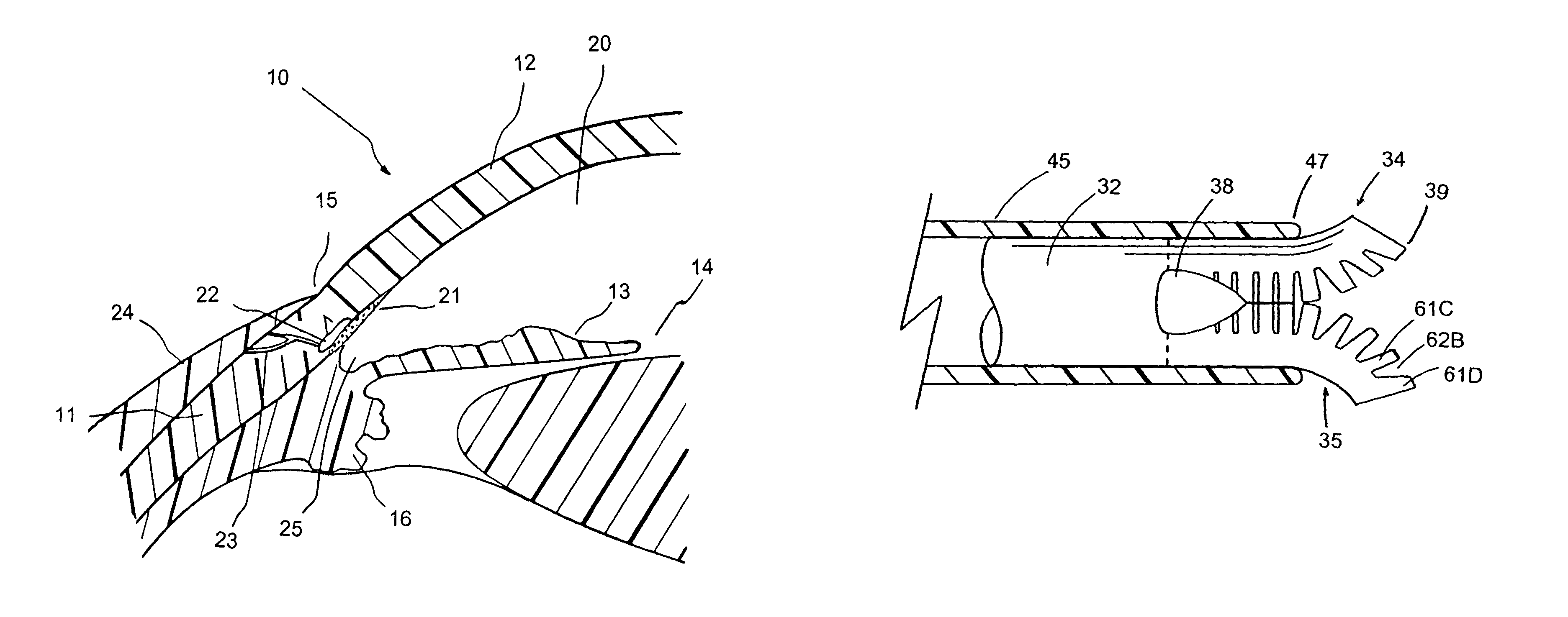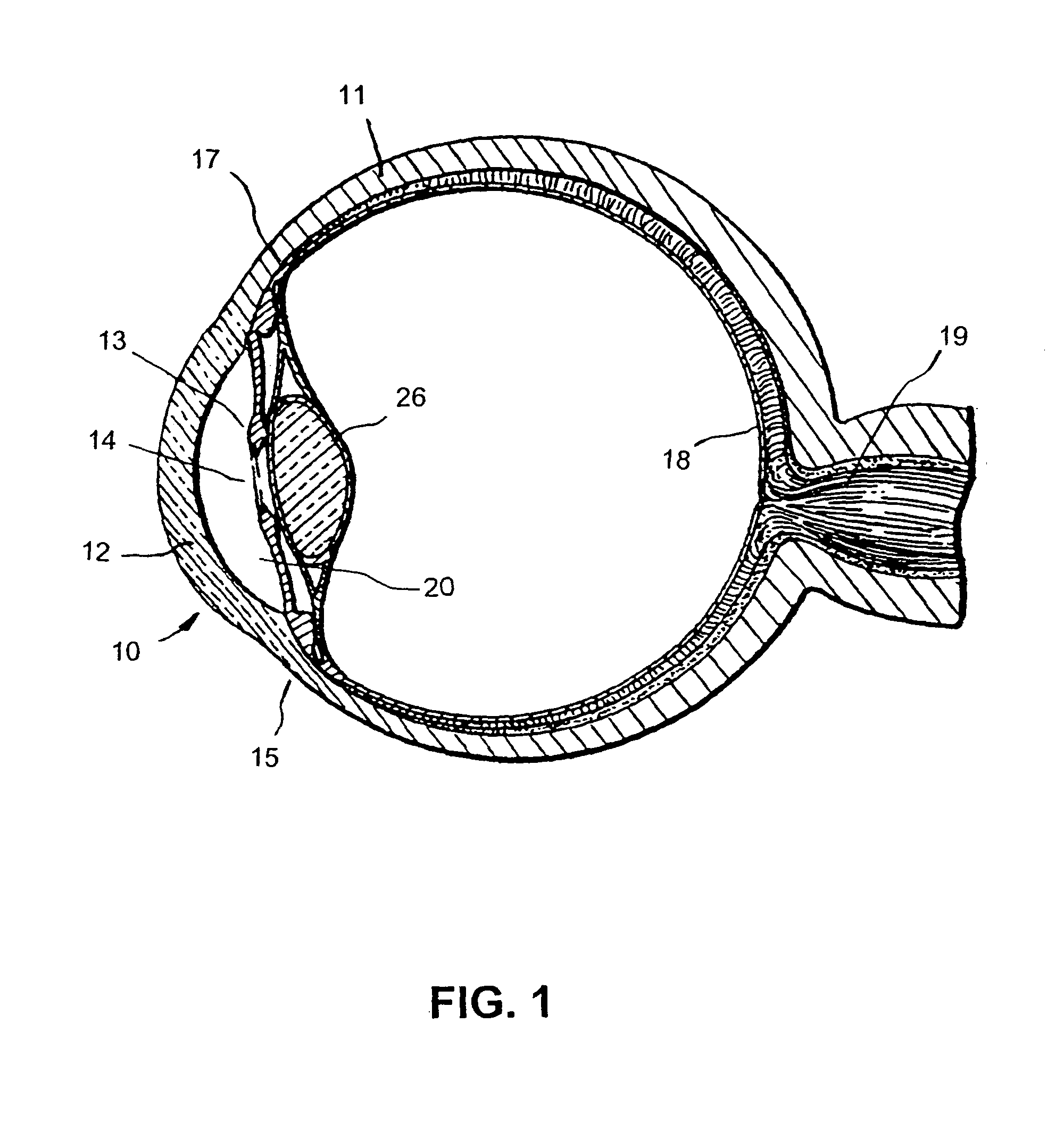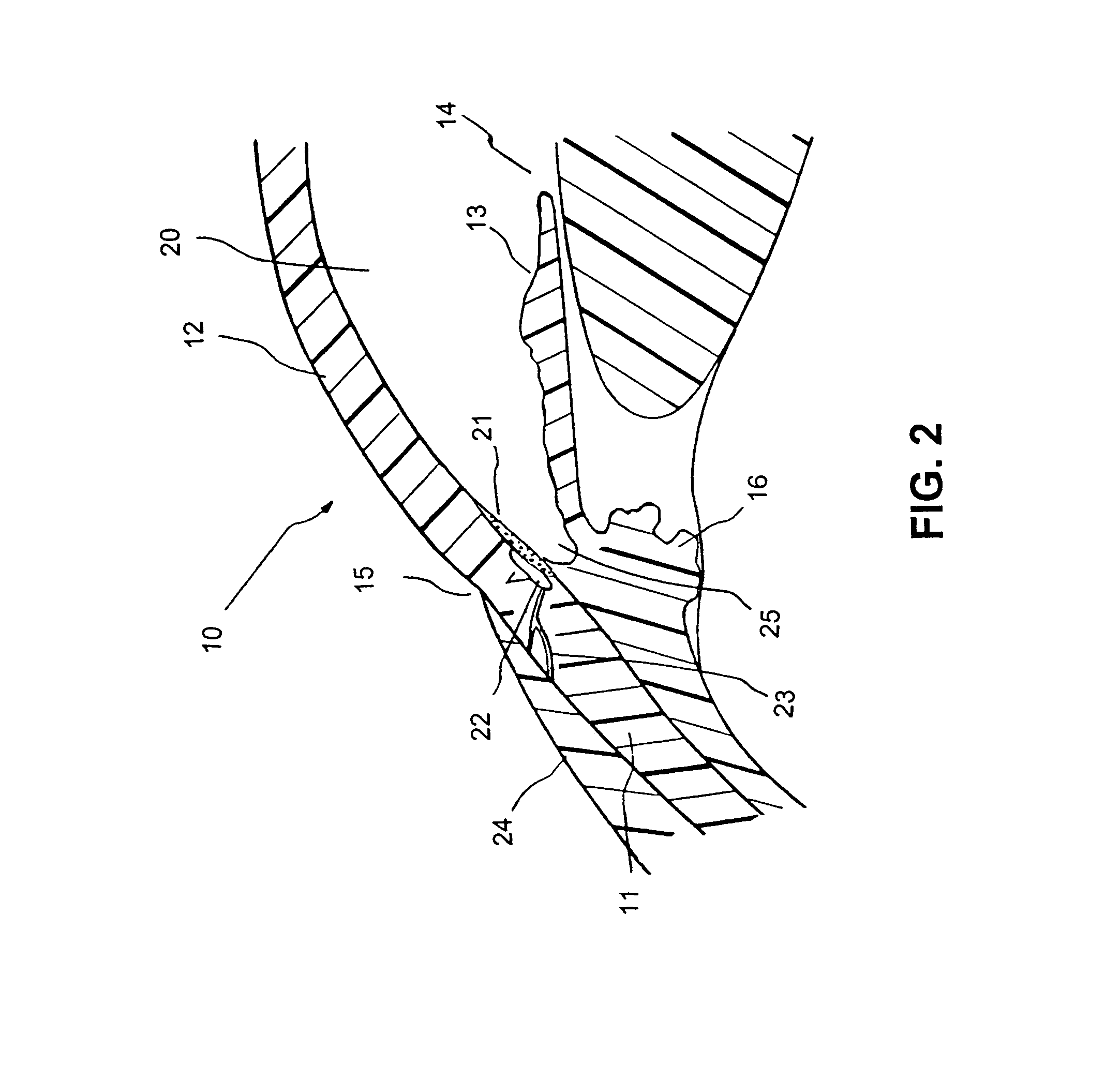Implant with pressure sensor for glaucoma treatment
a technology of glaucoma and pressure sensor, applied in the field of medical devices and methods, can solve the problems of significant side effects, blindness if untreated, and patients may suffer substantial, and achieve the effects of reducing surgical morbidity, eliminating the risk of hypotony, and avoiding hypotony
- Summary
- Abstract
- Description
- Claims
- Application Information
AI Technical Summary
Benefits of technology
Problems solved by technology
Method used
Image
Examples
Embodiment Construction
[0049]FIGS. 1 to 8 illustrate an apparatus for the treatment of glaucoma by trabecular bypass surgery.
[0050]FIG. 1 is a sagittal sectional view of an eye 10, while FIG. 2 is a close-up view, showing the relative anatomical locations of trabecular meshwork 21, the anterior chamber 20, and Schlemm's canal 22. Thick collagenous tissue known as sclera 11 covers the entire eye 10 except that portion covered by the cornea 12. The cornea 12 is a thin transparent tissue that focuses and transmits light into the eye and through the pupil 14, which is the circular hole in the center of the iris 13 (colored portion of the eye). The cornea 12 merges into the sclera 11 at a juncture referred to as the limbus 15. The ciliary body 16 extends along the interior of the sclera 11 and is coextensive with the choroid 17. The choroid 17 is a vascular layer of the eye 10, located between the sclera 11 and retina 18. The optic nerve 19 transmits visual information to the brain and is the anatomic structur...
PUM
 Login to View More
Login to View More Abstract
Description
Claims
Application Information
 Login to View More
Login to View More - R&D
- Intellectual Property
- Life Sciences
- Materials
- Tech Scout
- Unparalleled Data Quality
- Higher Quality Content
- 60% Fewer Hallucinations
Browse by: Latest US Patents, China's latest patents, Technical Efficacy Thesaurus, Application Domain, Technology Topic, Popular Technical Reports.
© 2025 PatSnap. All rights reserved.Legal|Privacy policy|Modern Slavery Act Transparency Statement|Sitemap|About US| Contact US: help@patsnap.com



